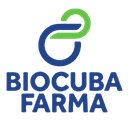Executive Secretary

9th International Scientific Conference on Agricultural Development and Sustainability
10th Symposium of Agricultural Engineering

Abstract
Spectroscopy in the visible (vis) and near infrared (NIR), using as a reference the spectral reflectance of weeds and crops, has allowed the development of strategies to recognise each other in a much more effective and efficient way than traditional methods based on direct observation. The aim of this work was to identify spectral reflectance traits of sugar cane leaves and three species of weeds. Fifty leaves of each species were collected. The vis-NIR spectral signatures were acquired at laboratory level with a portable spectrophotometer in the wavelength range 399 to 1697 nm. The results showed great variability of their average features. However, such variability is mainly manifested in the amplitude of the reflectance and not in the shape of the spectral feature. At 730.48 nm (close to the geometric centre of the red edge), 1 032.16 nm and 1 395.91 nm, different combinations of the three amplitudes were formed for each species. In this way, a characterisation of the spectral variations was achieved, which makes it possible to identify the significant wavelengths from which strategies for discrimination and classification of the plant species studied can be implemented. It was thus demonstrated that proper band selection and local calibration using a spectral classification approach can enable the mapping of weeds and facilitate local application of the spectral classification strategies.
Resumen
La espectroscopia en el visible (vis) e Infrarrojo cercano (NIR), utilizando como referencia la reflectancia espectral de arvenses y cultivos ha permitido el desarrollo de estrategias para reconocer entre unas u otros de una forma mucho más eficaz y eficiente que con los métodos tradicionales vasados en la observación directa. El objetivo de este trabajo fue identificar rasgos de reflectancia espectral de hojas de caña de azúcar y de tres especies de arvenses. Se colectaron 50 hojas de cada especie. Las firmas espectrales vis-NIR se adquirieron a nivel de laboratorio con un espectrofotómetro portátil en el rango de longitud de onda de 399 a 1697 nm. Los resultados mostraron gran variabilidad de sus rasgos promedio. No obstante, tal variabilidad se manifiesta principalmente en la amplitud de la reflectancia y no en la forma de la característica espectral. En 730,48 nm (próximo al centro geométrico del borde rojo), 1 032,16 nm y 1 395,91 nm, se formaron combinaciones diferentes de las tres amplitudes para cada especie. Con ello se logró una caracterización de las variaciones espectrales, que permite identificar las longitudes de onda significativas a partir de las cuales pueden implementarse estrategias de discriminación y clasificación de las especies de las plantas estudiadas. Así se demostró que realizar la adecuada selección de bandas y la calibración local utilizando un enfoque de clasificación espectral, puede permitir el mapeo de arvenses y facilitar la aplicación localizada de herbicidas.
About The Speaker

Ph. D. Katia Ojito Ramos

Discussion

